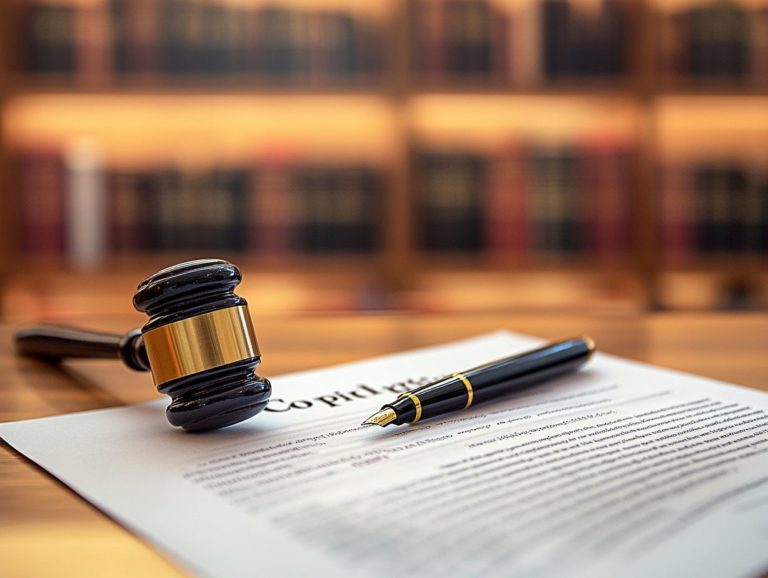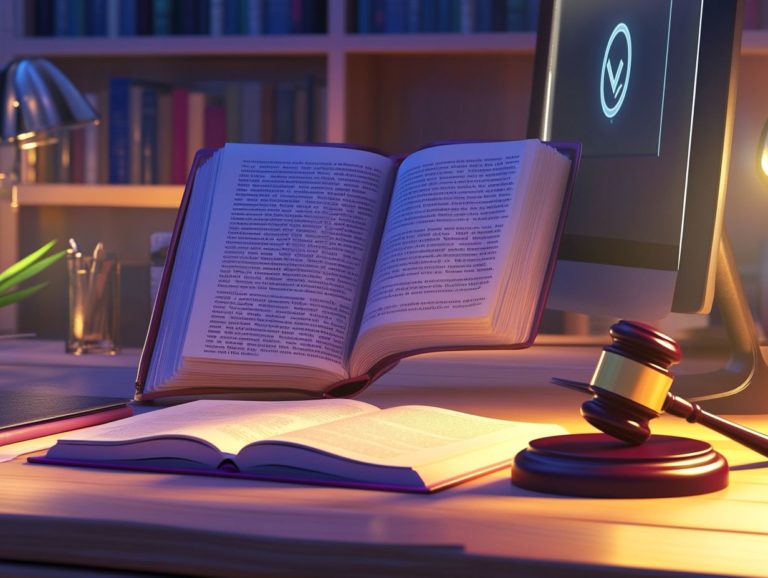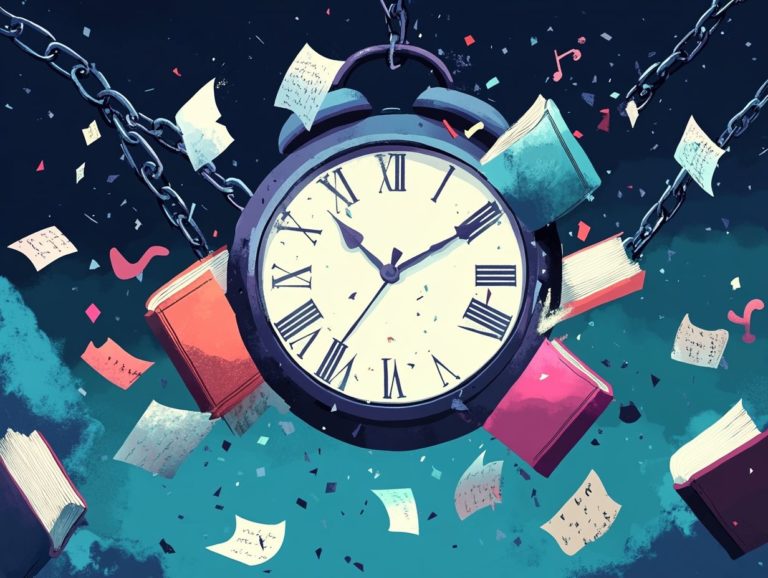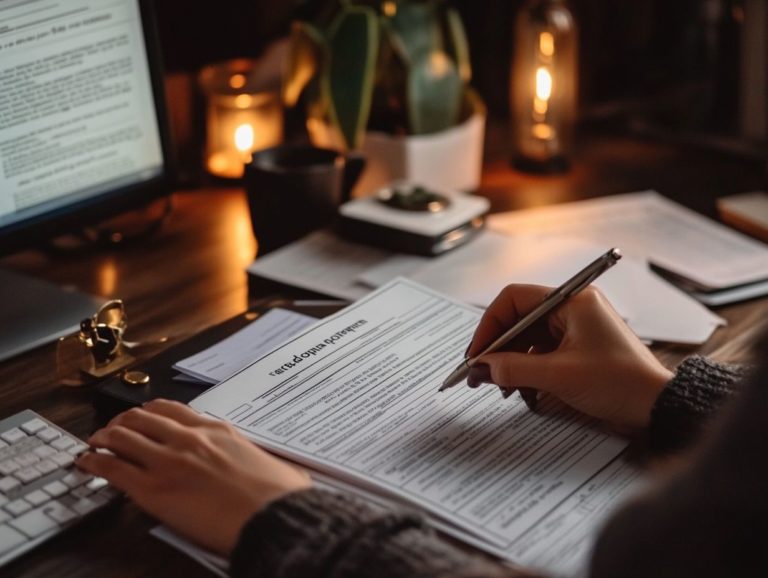The Role of Copyright in Literary Works
Copyright serves as a vital safeguard for your creative endeavors, granting you the legal framework needed to protect your literary works.
This article delves into the essence of copyright: its meaning, historical significance, and its specific application to literary creations. You ll discover the exciting types of works that copyright protects! We simplify the complexities of copyright law to provide insights into various aspects of ownership and the consequences of infringement.
We also explain fair use exceptions and provide practical steps to help you protect your own writing. Whether you re a seasoned author or just beginning your journey, this guide equips you with the essential knowledge required to confidently navigate the landscape of copyright.
Contents
- Key Takeaways:
- Understanding Copyright
- Copyright in Literary Works
- Infringement of Copyright
- Fair Use and Copyright
- Secure Your Literary Creations Today!
- Frequently Asked Questions
- What is the role of copyright in literary works?
- How does copyright protect literary works?
- What types of literary works are protected by copyright?
- How long does copyright protection last for literary works?
- What are the benefits of obtaining copyright for literary works?
- Are there any exceptions to copyright protection for literary works?
Key Takeaways:
- Copyright protects original literary works from being used or reproduced without the creator’s permission.
- Infringement of copyright can result in legal consequences and damages for the creator.
- Fair use allows for limited use of copyrighted material for purposes such as criticism, commentary, or education.
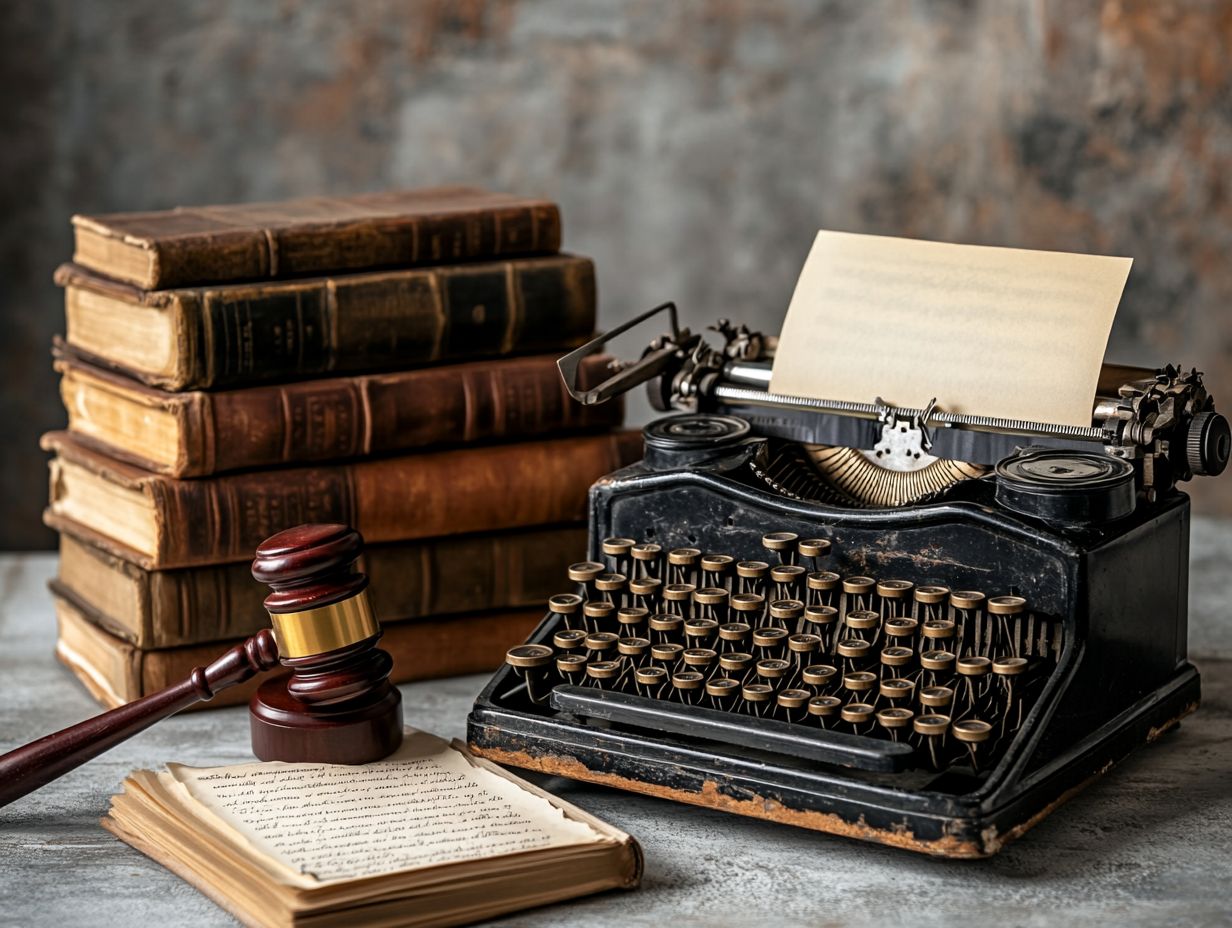
Understanding Copyright
Understanding copyright is critical now to protect your work as a creative professional, as it forms the legal foundation that safeguards your original expression. This framework not only protects your rights as an author but also clarifies the boundaries within which your creative works can be utilized without infringing on those rights.
In diverse jurisdictions like the US, UK, and India, copyright law is crucial in ensuring that you can benefit from your intellectual property while balancing the public’s interest through mechanisms such as the public domain.
What is Copyright?
Copyright serves as a robust legal framework that grants you exclusive rights over your original creations, whether they are literary, artistic, or musical. This ensures that your creative expression is acknowledged and protected.
This safeguard prevents unauthorized use of your works. It also fosters innovation and creativity. By providing you with the incentive to share your ideas with the world, copyright encourages a thriving creative environment.
It encompasses a wide array of elements, including novels, paintings, songs, films, and software, making it an invaluable asset in the creative industry.
It s essential to understand that while the core principles of copyright are largely consistent globally, the specific laws and their enforcement can vary significantly from one country to another. This variation can impact how you manage and protect your works on a global scale.
History and Purpose of Copyright Laws
The history of copyright laws paints a vivid picture of how our understanding of intellectual property rights has evolved over time, highlighting the delicate balance between protecting creators’ rights and ensuring public access.
It all began with early statutes designed to prevent unauthorized reproduction of original works. You can trace this journey back to the 18th century with the Statute of Anne in England, which set the stage for recognizing authorship.
Copyright legislation has undergone significant transformations. As society progressed, the complexity of these laws expanded to tackle the challenges presented by the increasingly digital landscape of the 21st century.
The core purpose of these regulations has always been to shield creators from infringement while allowing the public to access and utilize content freely. Landmark cases, like the U.S. Supreme Court’s ruling in ‘Eldred v. Ashcroft,’ illustrate the ongoing tension between protecting creativity and nurturing a vibrant public domain a space where works can flourish and inspire new ideas without constraint.
Copyright in Literary Works
Copyright in literary works stands as a crucial foundation of copyright protection, ensuring that you retain exclusive rights over your creations whether they are novels, poems, or other forms of written expression.
This framework not only safeguards your original authorship but also fosters the adaptation of your literary works, encouraging a vibrant landscape of creativity.
Types of Literary Works Protected by Copyright
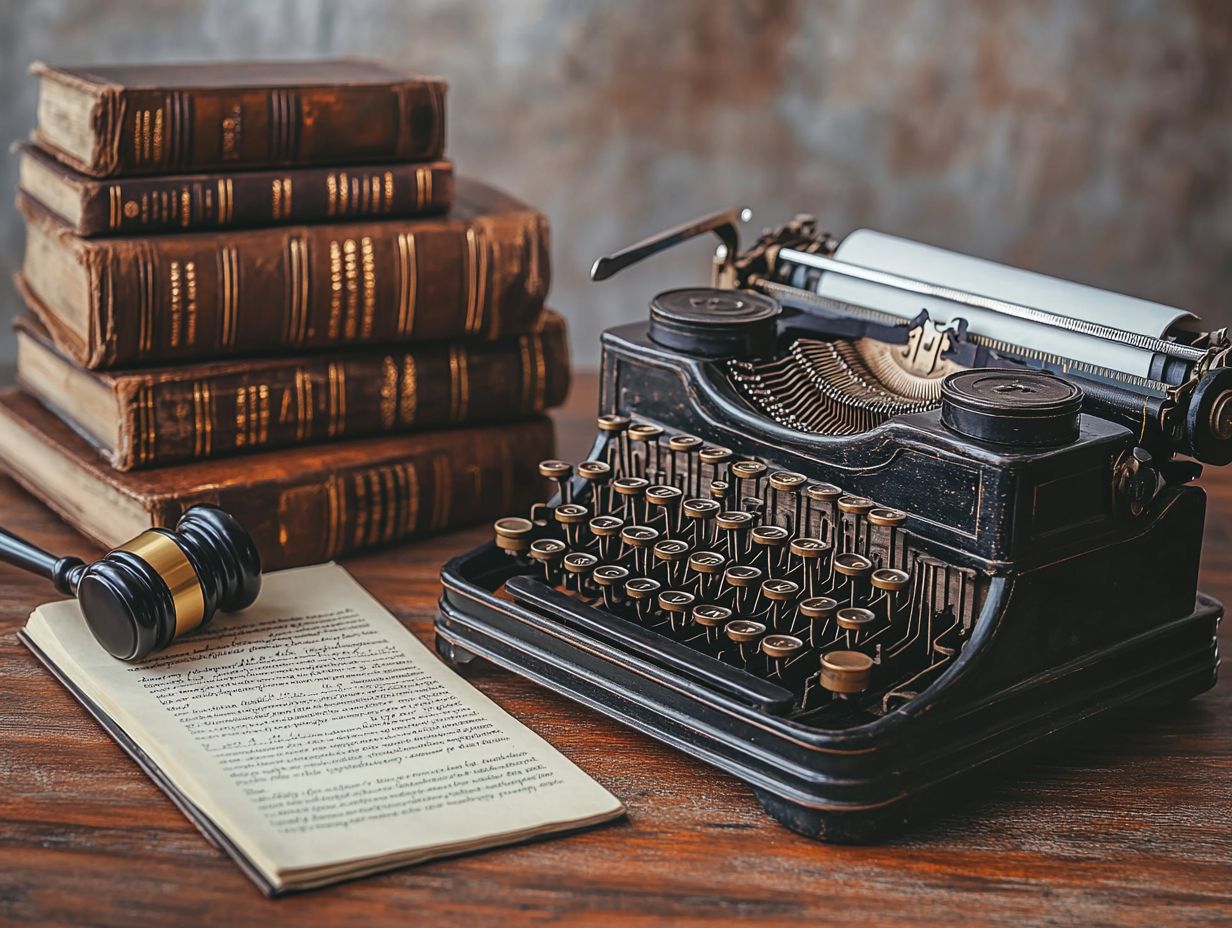
Many types of literary works are protected by copyright. This includes novels, poems, plays, and musical scores all shining examples of creativity.
Copyright also covers true stories, short stories, and screenplays. This protection helps you secure your unique expressions.
For example, a beloved novel like “Pride and Prejudice” highlights the author’s storytelling skills. It benefits from copyright, which prevents unauthorized reproductions.
Similarly, the powerful play “Hamlet” enjoys copyright protection. This ensures its themes and dialogue are not copied without permission.
Originality depends on the creative choices you make as an author. Even common ideas can become protectable works through your unique expression.
Copyright Ownership and Duration
You, the creator of the work, usually own the copyright. This means you maintain rights over your original creations.
However, if you create something as a “work for hire,” the hiring entity may own it. This can change how you negotiate rights with co-authors.
Copyright protection typically lasts your lifetime plus 70 years. Factors like publication dates and the type of work can affect this timeline.
For instance, collaborations might come with special rules that could change how long you re protected and how revenue is shared.
Infringement of Copyright
Copyright infringement occurs when you use a copyrighted work without permission. This can lead to legal action and financial loss for the copyright owner.
Unauthorized use can spark copyright disputes, even if you claim “fair use.” Be careful to avoid unintended consequences.
Defining Infringement and Its Consequences
Copyright infringement is the unauthorized use of protected works. This misuse can lead to legal action, financial penalties, and damage to your reputation.
Infringement happens when you reproduce, distribute, or display a copyrighted work without permission. The legal fallout can be severe, ranging from lawsuits to criminal charges.
For example, the lawsuit between Napster and record labels showed the consequences of copyright violations. Similarly, a popular online streaming service faced legal trouble for unauthorized use of songs.
Infringers may lose credibility, affecting future business or artistic ventures. Understanding these risks is crucial in navigating copyright law.
Fair Use and Copyright
The fair use doctrine is an important exception to copyright rules. It allows you to use copyrighted material without permission if you meet certain criteria and don’t harm the original work s market potential.
Exceptions to Copyright Protection
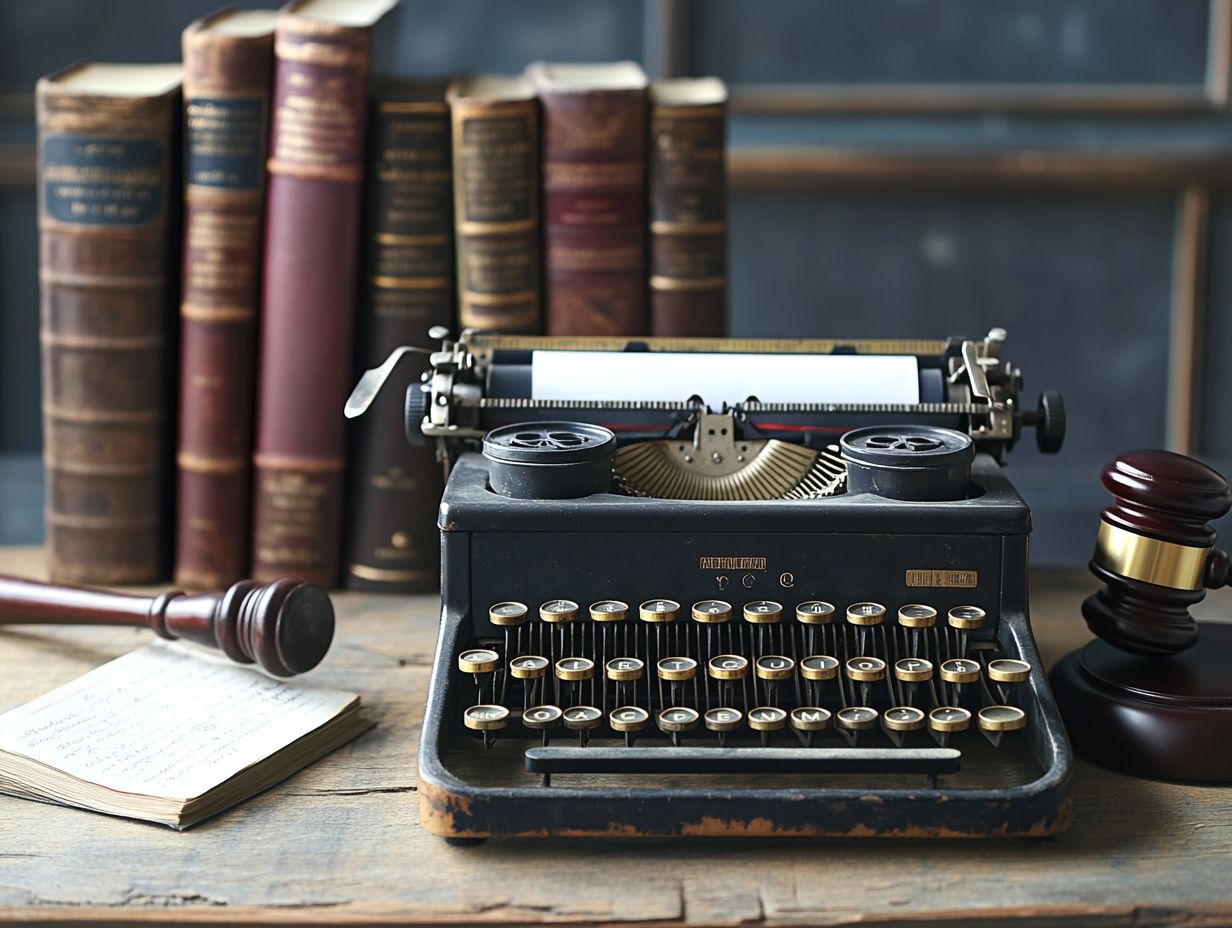
Exceptions to copyright protection, like fair use and public performance, let you use protected works without violating copyright. This balance is essential for creator rights and public access.
These exceptions are vital for educational institutions, researchers, and the general public, allowing them to use content effectively.
Take fair use, for example. It means you can use a part of a copyrighted work without permission under certain conditions. It s assessed based on various factors, including the purpose of your use, the nature of the copyrighted work, the amount you’re using, and its impact on the market for the original.
Educational use permits teachers to incorporate certain copyrighted materials into their curriculum, fostering an enriching environment for learning and exploration.
Public performance rights broaden access, permitting creators to showcase their work in designated settings while ensuring that appropriate royalties are paid when applicable.
As you navigate these exceptions, promote creativity while respecting intellectual property!
Secure Your Literary Creations Today!
Protecting your literary works starts with mastering the copyright registration process. This crucial step not only formally recognizes your rights as an author but also instills a profound sense of security for your creative expression.
By understanding this process, you can confidently safeguard your intellectual property and fully embrace your artistry.
Steps to Safeguard Your Copyright
To safeguard your copyright, adhere to specific registration requirements and take proactive measures during the copyright registration process. This ensures that your author privileges are recognized under the law.
This journey begins with submitting your work to the copyright office. Complete the necessary forms, pay applicable fees, and provide copies of your creations.
Once registered, you gain the power to enforce your rights in court and pursue statutory damages in cases of infringement. It’s imperative to maintain meticulous records of your creative process!
Staying vigilant against unauthorized use by periodically searching for your work online and promptly addressing any suspected infringements will strengthen the protection of your intellectual property.
Frequently Asked Questions
What is the role of copyright in literary works?
Copyright plays a crucial role in protecting the rights of creators and owners of literary works. It gives them exclusive control over how their work is used and distributed, ensuring they receive recognition and financial compensation for their efforts. Additionally, understanding the role of copyright in visual arts is essential for those in the creative industry.
How does copyright protect literary works?
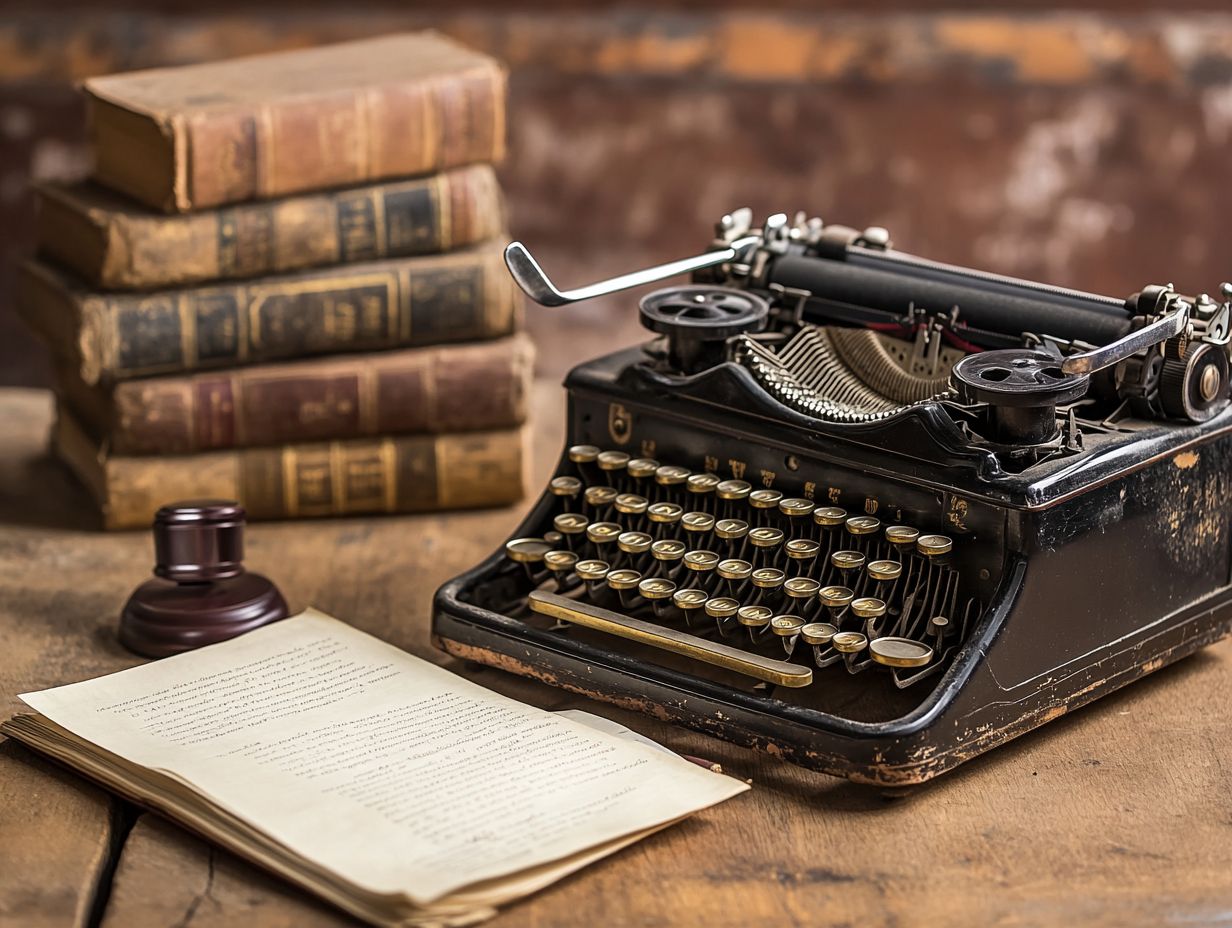
Copyright protects literary works by giving the creator the exclusive right to reproduce, distribute, and publicly display their work. This means anyone who wants to use the work must obtain permission from the copyright owner first.
What types of literary works are protected by copyright?
Any original work of authorship in a tangible form is eligible for copyright protection. This includes novels, poems, lyrics, plays, essays, and other literary works. It also covers derivative works like translations or adaptations of existing literary works.
How long does copyright protection last for literary works?
In most countries, copyright protection for literary works lasts for the life of the author plus an additional 70 years after their death. The work cannot be used without permission during this time. Afterward, it enters the public domain and can be used freely by anyone.
What are the benefits of obtaining copyright for literary works?
Obtaining copyright for literary works provides creators with legal protection against unauthorized use. It allows them to earn income from their work and maintain control over how it is distributed and used.
Are there any exceptions to copyright protection for literary works?
Yes! There are exceptions that allow limited use of copyrighted material. These exceptions include criticism, commentary, news reporting, teaching, and research.
These rules are often called “fair use.” They vary by country and require careful evaluation on a case-by-case basis.

